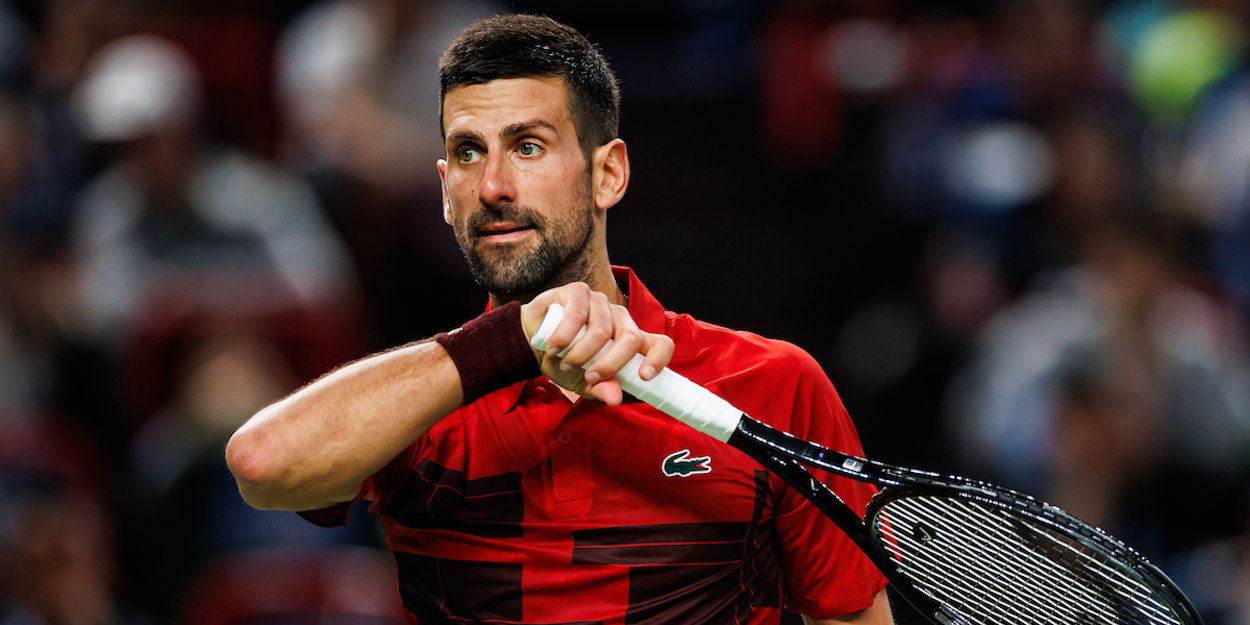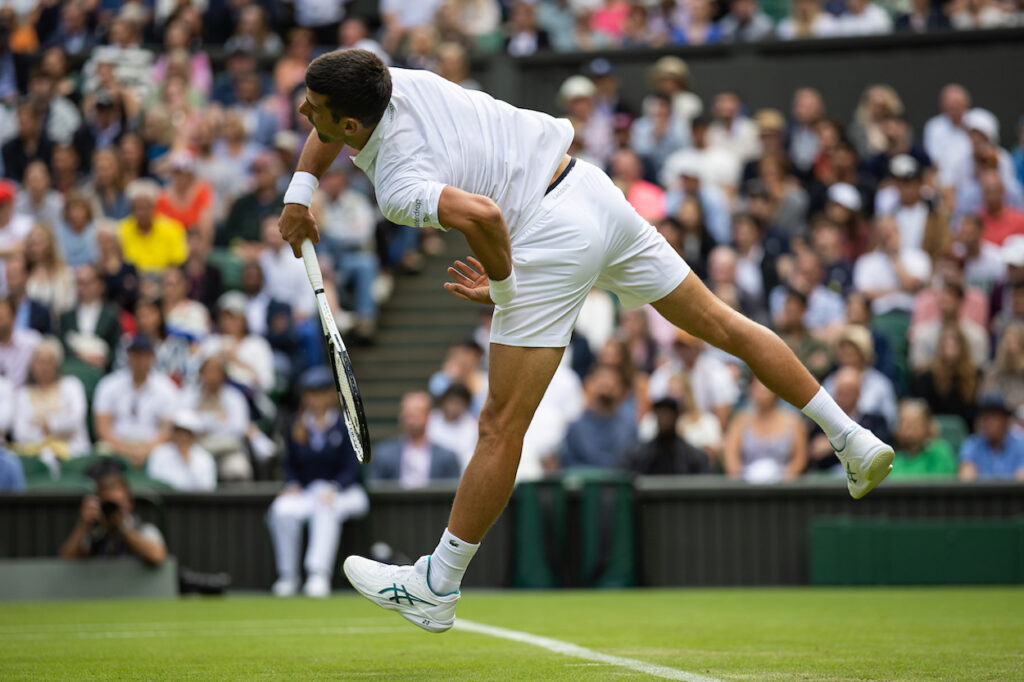
Stats Analysis: Did Novak Djokovic begin a ‘decline’ in 2024?
I think we’d all agree that 2024 was an odd season for Novak Djokovic. We have all been used to him winning relentlessly, so a calendar year with just one title is certainly ad oddity.
The question is whether or not it is a decline, though. You look at the ATP Tour and can’t help but notice the rise of the new stars, most notably Jannik Sinner and Carlos Alcaraz who shared the four grand slams evenly between them.
Also, Djokovic himself is now 37 years old, so talk of decline is natural. It’s remarkable that he was able to sustain such an incredible level for so long, but one thing that is for sure is that once you hit your late thirties you’re not getting any better.
Djokovic appears to be wanting to shake things up for 2025, and his appointment of Andy Murray to his coaching team is testament to that. Is there still an elite, the elite, level to work with though? We looked at some of the numbers behind his serves and returns to find out.
Novak Djokovic serve

First Serve percentage
Career: 64.8%
2023: 64.0%
2024: 63.7%
First Serve points won
Career: 74.1%
2023: 77.1%
2024: 75.4%
Second Serve points Won
Career: 55.5%
2023: 57.3%
2024: 55.1%
Service games won
Career: 86.1%
2023: 89.1%
2024: 85.7%
Aces per match
Career: 5.7
2023: 7.2
2024: 7.1
Double faults per match
Career: 2.3
2023: 2.9
2024: 2.6
If there is one thing we can say for sure about Novak Djokovic in 2024, it’s that he is still serving exceptionally well. That will come as little surprise to anyone who has watched his career projection as it’s an area of his game that is largely unrecognisable from how it was when he was a younger player.
A lot of the credit there has to go to Goran Ivanisevic, of course. Ivanisevic joined Djokovic’s coaching team in 2019 and was able to transform the Serbian’s serve into one of the most potent on the ATP Tour.
Noticeable improvements were made in both speed and consistency and, for a few years, it really did elevate Djokovic’s game to a level perhaps never before seen in tennis.
Djokovic and Ivanisevic parted ways in March, and many were wondering whether his serve would be something that suffered. The truth is, it has, but it’s important to note that although the key numbers have dropped, the bar was exceptionally high to begin with.
The headline number here is in the number of service games Djokovic is winning. In 2023, it was an ATP-leading 89.1%. This year it has fallen to 85.7%. That’s still impressive, but it’s an edge he has definitely lost. For context, it’s around the same as Dennis Shapovalov (85.3%), and few would hold him up as a model of serving efficiency.
The question here is how much this is a decline in his game and how much is just the natural result of playing less tennis. Serving relies more on rhythm than any other element of tennis, and him dipping in and out of the schedule this year, as he has done, is going to have a big impact on that.
Novak Djokovic return game

First Serve Return Point Won
Career: 33.7%
2023: 33.2%
2024: 32.6%
Second Serve Return Point Won
Career: 55.2%
2023: 54.8%
2024: 54.7%
Return games won
Career: 31.8%
2023: 29.2%
2024: 29.0%
Break Points converted
Career: 44.1%
2023: 42.1
2024: 41.4%
While Djokovic’s serve has improved immensely during his career, the thing that his success has been built upon more than anything is his return game. Few, in fact, would dispute a claim that Djokovic is the finest returner to ever pick up a tennis racket.
You would have to say, as well, that it’s a part of his game that has remained incredibly consistent this season.
Sure, his return games win percentage his dropped slightly on his career level, but that drop is replicated across the ATP over the last few years, which points to something more ubiquitous at work.
Obviously there has been a lot of talk recently about a lack of uniformity with the balls from tournament to tournament, and you wonder how big a part that is playing here.
In 2020, for example, seven players had a return game win-percentage of >30%, Djokovic among them (32.9%). That is as many as the last three years combined. It’s hard to put your finger on exactly why that is, but what we can say with some certainty is that it’s getting harder to win return games in general in the ATP.
The worrying drop for Djokovic is that he is getting less ruthless with his opportunities. In 2021 he was winning >45% of the break points he earned. Now it’s 41.4%. That’s a significant drop and it’s not one replicated in general trends.
With great returners like Djokovic, you always have to temper this statistic with the fact that he gets more break points than most, so you’d expect him to convert at a lesser rate than others. It also needs to be pointed out that in tennis it is not the number of points you win that makes the real difference, but which ones you win, and Djokovic has always been a master of that.
However, the drop is significant enough to be notable, and it’s a trend he will be keen to address in 2025 for sure.
Is Djokovic in decline?
There can be no question that, yes, Novak Djokovic is in decline. You don’t need to micro-analyse statistics to see that. He can be seen in the big numbers. 2024 was just the second time in 14 years that Djokovic failed to win a major, and the other year, 2017, was one wrecked by injury.
At 37-years-old, too, you would expect a drop off. The only reason we are even talking about it is that it’s Novak Djokovic and he is practically superhuman. If it was anyone else, Roger Federer aside, there would be no need for analysis at all. Frankly, what Djokovic has achieved in his 30s is pretty much unprecedented – perhaps in any sport, not just tennis.
Again, you would probably expect a player to experience a drop when they play fewer matches and go almost a full season without a leading coach, and both apply here too.
So no one will be looking at these numbers and feeling especially surprised. Indeed, when Djokovic confirmed he would be significantly throttling back his schedule, most analysts predicted it.
The question really is how much of the decline is essentially by choice? Playing fewer matches and not replacing Goran Ivanisevic were decisions he made. Is it less nature catching up with him and more a motivation issue? Certainly, it feels notable at least here that the tournament he really wanted to win this year, the Olympics, was the one he did win.
Heading into 2025 with Andy Murray by his side as a coach, it will be interesting to see what kind of schedule he commits to and what level he is able to produce. And, the fact we are all so curious about that at all suggests claims Djokovic has hit his natural decline are premature for now.
READ NEXT: ‘Bu***hit!’ – Top analyst dismisses Novak Djokovic and Andy Murray suggestion
![]() Join >> Receive $700/£600 of tennis gear from the Tennishead CLUB
Join >> Receive $700/£600 of tennis gear from the Tennishead CLUB
![]() Social >> Facebook, Twitter & YouTube
Social >> Facebook, Twitter & YouTube
![]() Read >> World’s best tennis magazine
Read >> World’s best tennis magazine
![]() Shop >> Lowest price tennis gear from our trusted partner
Shop >> Lowest price tennis gear from our trusted partner


